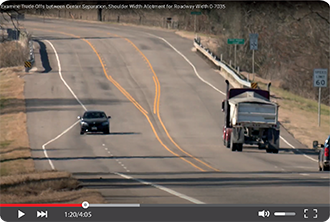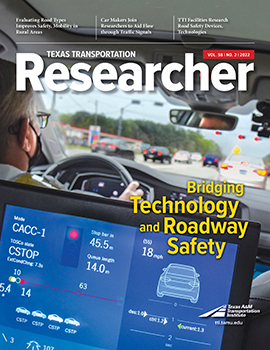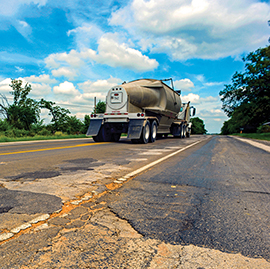Rural roadways often have a high number of crashes, especially severe crashes. To help decrease that number, researchers have focused safety and mobility studies on rural areas that experience increased truck traffic and road usage during certain economic booms — like oil booms.
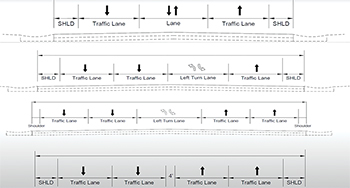
The Texas Department of Transportation (TxDOT) Odessa District experienced an oil boom over the last decade and increased truck traffic, along with a rise in crashes. A district engineer at the time, John Speed, now a Texas A&M Transportation Institute (TTI) research engineer, identified the issue and worked with TTI to develop a problem statement. TTI conducted the project Examine Trade-Offs between Center Separation, Shoulder Width Allotment for Roadway Width (TxDOT Project 0-7035) to improve safety in rural areas in Texas.
TTI Research Engineer Srinivas Geedipally notes, “It’s proven that four-lane undivided roads in rural areas have a poor safety performance.”
TTI examined several cross sections for two-lane undivided and multi-lane undivided roadways. The purpose was to separate vehicles going in opposite directions so they would not hit each other in the middle of the road. Keeping them farther apart might prevent crashes from truck drivers on an undivided roadway knocking off side mirrors or swerving to avoid side mirror debris in their direct path on the road.

Researchers evaluated the cross sections of different roadways across Texas — from four-lane, undivided roads with only a centerline stripe in the middle to keep opposite-direction traffic in their lanes, to two-lane roads built as Super 2s for the added benefit of a passing lane for vehicles driving at faster speeds. The research team assessed the safety performance of these roadway types and the efficiency of each type to accommodate traffic volume, speed and flow.
The TTI team produced guidelines and recommendations for what roadway type or feature has the potential to improve safety and mobility in different locations. TTI’s recommendations can serve as a methodology for how to develop and expand roadways in rural regions across the state.
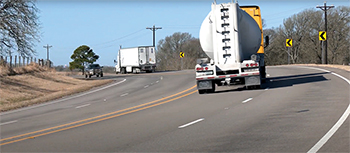
“The guidelines can be used everywhere,” says Geedipally. “But they’re especially important for rural areas like the Permian Basin.”
If the volume of traffic increases in a rural area, this project’s results can inform decisions about what types of roadways could alleviate issues with the rise in traffic and provide a safer environment for road users. Those decisions could involve reducing the shoulders on a rural roadway, decreasing the number of lanes for a road section, or adding a 4-foot median buffer in the middle.
“This study can help you develop location-specific tools to reduce risks at hot spots where crashes continue to occur,” says Speed. “That’s the part that we think is so exciting about all this — it’s not something that’s just for the Permian Basin. It’s something that can be used in any rural setting with unusual traffic movements or roadway configurations.”

